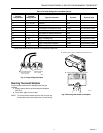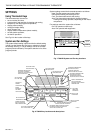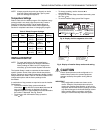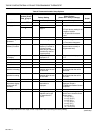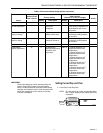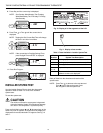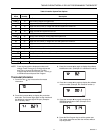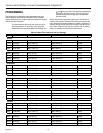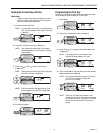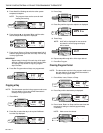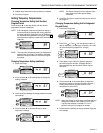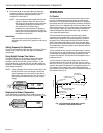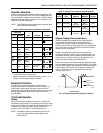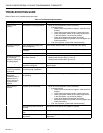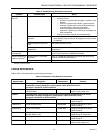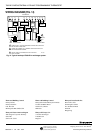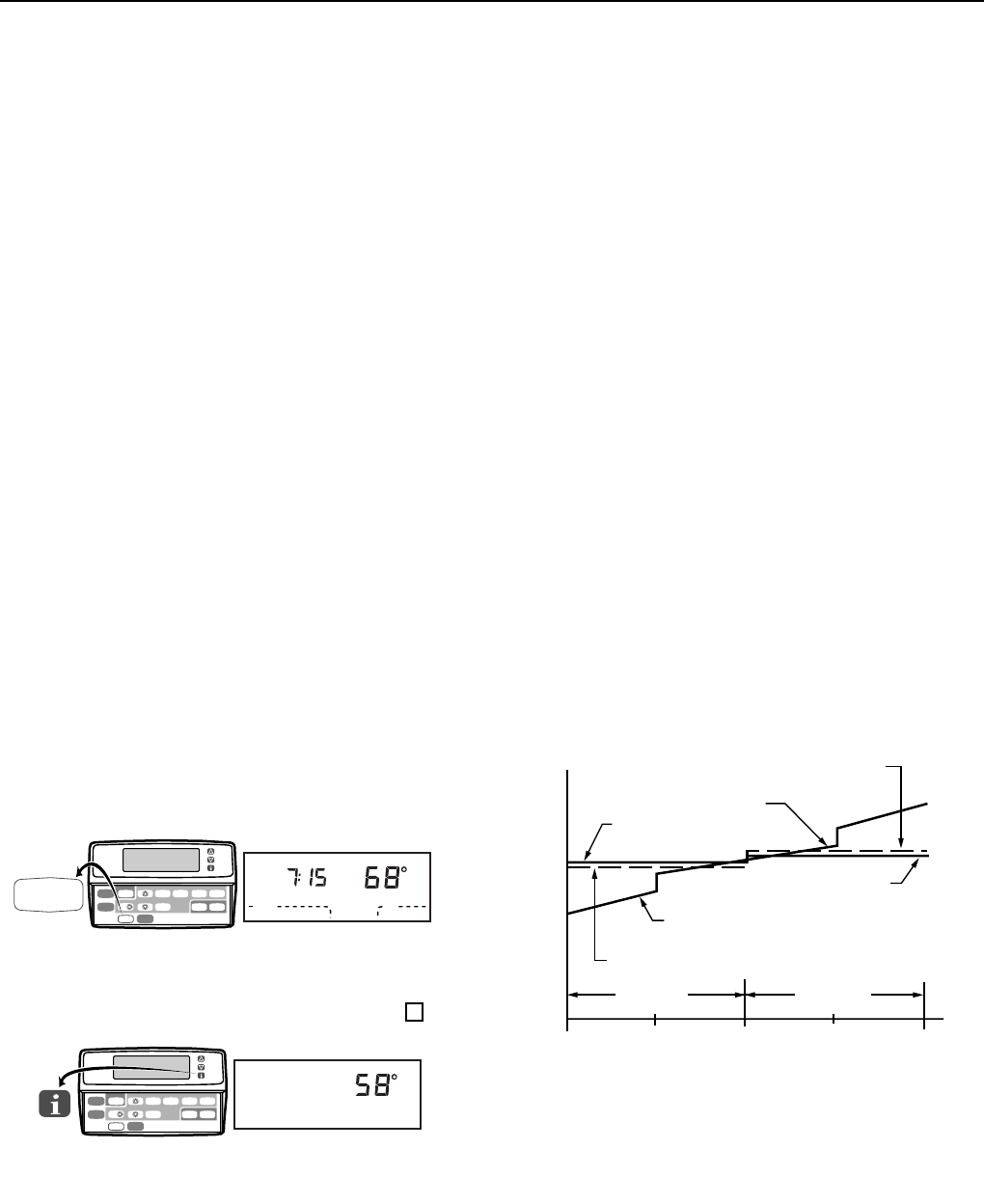
T8624D CHRONOTHERM
®
IV DELUXE PROGRAMMABLE THERMOSTAT
68-0166—1
16
6. Press increase ▲ or decrease ▼ key to adjust the
temperature setting, if desired. (Example: Cool 84° =
cooling equipment will operate when the room
temperature is above 84°F)
NOTE: In this example, the thermostat uses the Hold
setting for eighteen days and returns to the
daily programs at the Return period start time.
The temperature settings are heating 54°F
and cooling 84°F. Only the heating
temperature is used because the System is
set for Heat. The thermostat will use both the
heating and cooling temperature settings when
the System is set to Auto.
IMPORTANT
If the Hold needs to be canceled before the
designated time, press Run Program to return to the
program.
Setting Temporary Fan Operation
Press Fan until the desired fan operation is selected. This fan
setting will be in effect until the next regularly scheduled
period starts.
Using Daylight Savings Time Feature
This feature allows you to change in and out of Daylight
Savings Time with a key press. When Daylight Time is
pressed in the fall, the time will go back one hour. In the
spring, the time will go ahead one hour and the display will
show DST. See Setting the Current Day and Time section for
initial setting instructions.
NOTE: Pressing Daylight Time more than once within a five
minute period will scroll you through various time
options (example: one hour earlier or later with or
without DST). Pressing Daylight Time six times in a
five minute period will return you to your original
settings.
OPERATION
P+I Control
The thermostat microprocessor based control requires that
the user understands temperature control and thermostat
performance. A conventional electromechanical or electronic
thermostat does not control temperature precisely at setpoint.
Typically, there is an offset (droop) in the control point as the
system load changes. This is a phenomenon that most people
in the industry know and accept. Many factors contribute to
offset including switch differential, thermal lag, overshoot,
cycle rates and system load.
The thermostat microprocessor simultaneously gathers,
compares and computes data. Using this data, it controls a
wide variety of functions. The special proprietary algorithm
(program) in the thermostat eliminates the factors causing
offset. This makes temperature control more accurate than
the conventional electromechanical or electronic thermostats.
The temperature control algorithm is called proportional plus
integral (P+I) control.
The thermostat sensor, located on the thermostat or remote,
senses the current space temperature. The proportional error
is calculated by comparing the sensed temperature to the
programmed setpoint. The deviation from the setpoint is the
proportional error.
The thermostat also determines integral error, which is a
deviation based on the length of error time. The sum of the
two errors is the (P+I) error. The cycle rate used to reach and
maintain the setpoint temperature is computed using the P+I.
The addition of the integral error is what differentiates the
thermostat from many other electronic and electromechanical
thermostats. See Fig. 12.
Fig. 12. Proportional temperature control
versus P+I temperature control.
M10341
Time Set Program
System Fan
Run
Program
Hold Temp
Set Current
Day/Time
Wake
Leave
Return Sleep
Day
Heat/Cool
Settings
Daylight
Time
Copy
Daylight
Time
Auto
System Fan
Wake
Room
AM
Tue
Heat
Displaying the Outdoor Temperature
If your thermostat is equipped with an outdoor sensor, you
can check the temperature at the sensor by pressing i once.
M10342
Time Set Program
System Fan
Run
Program
Hold Temp
Set Current
Day/Time
Wake
Leave
Return Sleep
Day
Heat/Cool
Settings
Daylight
Time
Copy
Outdoor
HEATING
COOLING
PERCENT LOAD
TEMPERATURE
THERMOSTAT
HEAT SETPOINT
P+I CONTROL
POINT
PROPORTIONAL COOL
CONTROL POINT
THERMOSTAT
COOL SETPOINT
P+I CONTROL POINT
PROPORTIONAL HEAT
CONTROL POINT
M4414
100 50 0 50 100



